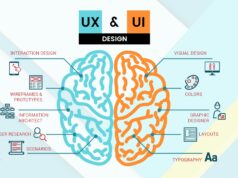
In the ever-changing environment of software development, user experience (UX) design has become a critical component in assuring application success. Quality Assurance (QA) is essential in this process since it is in charge of assessing not only the functionality but also the user-centric elements of software. This blog delves into the best practices for user experience design in quality assurance, with a particular emphasis on the critical component of regression testing.
Regression testing, in particular, ensures that as software evolves, it retains the same high-quality user experience, free from defects and performance issues. By following these best practices, QA teams will be able to easily integrate UX factors such as responsiveness, usability, and aesthetics into their testing methods, resulting in a superior and consistent user experience with each software release.

Understanding User Experience Design in Quality Assurance
UX (User Experience) Design is a comprehensive subject that encompasses considerably more than just aesthetics and user interface. Understanding UX in Quality Assurance (QA) entails examining how a software program or system interacts with end-users, with an emphasis on their pleasure and engagement. To provide a smooth experience, QA teams must review the whole user journey, from the initial encounter to job fulfillment. This comprises investigating issues such as usability, performance, accessibility, and users’ overall emotional response.
QA may certify that an application not only satisfies functional requirements but also offers a good and memorable experience by thoroughly understanding UX. This alignment between UX and QA is critical in providing software that not only functions but also delights users, adding to the product’s overall success.
The Role of QA in Ensuring Superior User Experience
Quality Assurance is the discipline in charge of ensuring that software satisfies the appropriate quality standards. Aside from standard functional testing, QA is critical in assessing a software application’s user experience. QA teams must focus on ensuring that the program not only works properly but also provides the intended user experience.
Benefits of Cloud in Quality Assurance
The use of cloud technology into the QA process has a number of advantages that lead to a better user experience.

- Scalability and adaptability
Cloud infrastructure enables QA teams to scale up or down their testing efforts dependent on project needs. This adaptability is critical when working with programs that have varying user loads. The capacity to provide resources as required guarantees that testing is thorough and accurate.
- Accessibility and Collaboration
The cloud provides a centralized platform for QA teams, developers, and stakeholders to collaborate. This promotes improved communication, faster issue resolution, and guarantees that everyone is on the same page when it comes to user experience goals. Furthermore, cloud solutions provide remote testing, allowing QA specialists to work from any location. This accessibility is especially advantageous in today’s scattered work contexts.
- Cost-Efficiency
Cloud-based testing solutions frequently do away with the requirement for costly on-premises gear and infrastructure. This cost-effectiveness enables firms to more efficiently deploy resources and invest in other vital areas of software development and user experience design.
Best Practices for User Experience Design in Quality Assurance
UX (User Experience) Design is critical in contemporary software development, and Quality Assurance (QA) is critical in providing a smooth and engaging user experience. This post will look at 10 best practices for UX design inside the QA process, with an emphasis on how these approaches may lead to better software experiences.

- Early Involvement of QA in the Design Process
Involving QA specialists early in the design process is a critical aspect of achieving a great user experience. QA may impact and define the UX design by interacting with designers and developers from the start. This proactive strategy aids in the identification of prospective difficulties or impediments that may have an impact on the user experience later in the development process. When QA is involved early in the process, they may address usability, accessibility, and general functioning issues, ensuring that the product corresponds with the planned user experience from the start.
- User-Centered Testing
A successful QA methodology is built on user-centered testing. QA teams should build test scenarios that reflect real-world user interactions rather than depending exclusively on functional and technical specifications. Testing may be modified to guarantee that the software not only performs correctly but also corresponds with the user’s wants and preferences by analyzing user behavior and expectations. This method enhances the entire user experience by making the program more intuitive, user-friendly, and efficient.
- Continuous Integration of UX Design
UX design should be included continuously throughout the software development lifecycle. QA teams must guarantee that user experience considerations are taken into account at all stages of development. This includes not just doing UX-focused testing but also remembering user experience principles while addressing issues, making changes, and offering feedback to the development team. Continuous UX design integration into the QA process is critical for establishing a unified and polished user experience.
- Cross-Browser and Cross-Device Testing
Cross-browser and cross-device testing is critical since consumers access programs via numerous devices and browsers. QA teams should fully test the program on a variety of devices and browsers to ensure that it performs effectively and provides a consistent user experience across several platforms. Cloud-based testing solutions enable access to a wide range of settings, making this approach more efficient and cost-effective.
- Accessibility Testing
Testing for accessibility is critical for ensuring an inclusive user experience. To guarantee that the software is useable by people with disabilities, QA teams should carefully test for compliance with accessibility standards (such as WCAG). Cloud-based accessibility testing tools and services may help detect and fix accessibility issues quickly, making it simpler to design software that is accessible to a wide range of users.
- Performance Testing
User experience is more than simply utility and aesthetics; it is also inextricably linked to performance. A bad user experience might be caused by slow-loading pages, sluggish programs, or inconsistent behavior. To guarantee that the software can handle real-world usage situations without affecting the user experience, performance testing, including load testing and stress testing, should be a vital element of the QA process.
- Security and Data Privacy Testing
The user experience is also influenced by the software’s security and data privacy features. Users believe that their data is safe, and any breaches or privacy concerns can have a negative impact on their experience. To uncover vulnerabilities and guarantee that the program conforms with data protection rules, QA should include security and data privacy testing in its scope. Regular security testing and code analysis are required to keep users’ trust and confidence strong.
- Usability Feedback Loops
In order to achieve continuous improvement, usability feedback loops must be integrated into the QA process. QA teams should collect input from users and stakeholders and utilize it to create incremental improvements. This feedback-driven strategy guarantees that the software grows to better match the demands of the users, resulting in a more rewarding and engaging user experience.
- Monitoring and Optimization of Performance
Monitoring the operation of software in a production environment is an important activity for ensuring a positive user experience. QA may cooperate with development teams to enhance the product by continuously examining performance data and finding areas for improvement. This constant commitment to performance aids in the prevention of user experience deterioration over time.
Collaboration and Communication
A good user experience requires effective collaboration and communication among the QA, development, design, and product management teams. Regular meetings, detailed documentation, and the use of collaboration technologies may help to expedite communication and ensure that everyone is on the same page when it comes to UX objectives and priorities. When all stakeholders collaborate, it is simpler to address and fix UX issues quickly, resulting in a more enjoyable user experience.

Cloud-Based Tools and Solutions
QA teams may employ a variety of cloud-based tools and solutions to improve user experience design and testing.
- Testing across browsers and devices
Users can access apps using a variety of devices and browsers. Cloud-based testing solutions provide you access to a large number of device-browser combinations, allowing you to find and address compatibility issues that might harm the user experience.
- Load Testing in the Cloud
The cloud is an excellent platform for performing load testing to see how well your application works under high user loads. This form of testing guarantees that even during peak usage periods, the user experience remains fluid and responsive.

Monitoring and Feedback Loop
Continuous monitoring and feedback are critical components of ensuring a good user experience.
- Constant Monitoring
The cloud enables continuous monitoring of program performance and user activity. Even after deployment, QA teams may proactively discover and resolve issues, guaranteeing a continuously excellent user experience.
- Obtaining User Feedback
Collecting customer input is quite beneficial in terms of enhancing the user experience. Cloud-based feedback systems may be implemented into apps to collect user insights, which can then be used to influence continuing UX design and development efforts.
- Iterative Development
Iterative design is used in user experience design. Based on user input and testing findings, QA teams should collaborate closely with developers to prioritize and execute changes. Because of the cloud’s agility and scalability, incremental enhancements may be implemented more quickly.

Conclusion
Quality assurance is critical in ensuring that software programs deliver an amazing user experience in a technological world where user experience is a major competitive differentiator. By utilizing cloud technologies, QA teams may improve their user experience design processes through scalability, flexibility, cost-efficiency, and collaboration.
User-centered testing, early QA integration, continuous testing, and real-world scenario testing are all important best practices. QA teams can efficiently handle UX concerns with cloud-based tools and solutions for automated testing, cross-browser and cross-device testing, load testing, and accessibility testing.
Furthermore, continual monitoring, user input gathering, and iterative improvement guarantee that user experience design is a continuous process of refinement and improvement.
Moving forward, the cloud will continue to be a driver for quality assurance innovation, allowing QA teams to design software that not only operates correctly but also provides a superior user experience, eventually driving customer happiness and corporate success.









